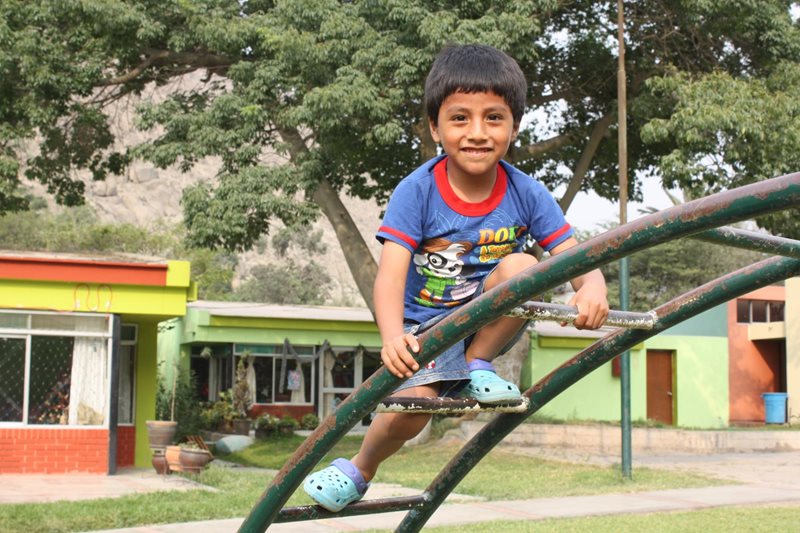In Lima, tens of thousands of children never get to experience what it is truly like to be a child
.jpg?lang=en-US&width=800)
SOS Children's Village Chosica-RÃo Hondo (previously known as SOS Children’s Village Rio Hondo) is located around 40km outside of the country's capital, Lima, a city that has seen its population grow more rapidly than ever over the past decade. Peru remains a country of extreme contrasts. In Lima, the lives of thousands of families are overshadowed by chronic malnutrition, a lack of access to drinking water, electricity and decent housing infrastructure. While a small proportion of limeños belong to the wealthy upper class, the bulk of Lima's population is struggling to survive in the shantytowns.
Although the situation has slightly improved over recent years, nearly 60 per cent of Peru's children continue to live in poverty. Millions of children are deprived of a loving, affectionate family environment. A high number of them have lost parental care and many more are at risk of losing it as a result of poverty. In Lima, poverty may not be as manifest as in the country's rural zones. However, in neighbourhoods such as Callao, many children suffer from anaemia, lead poisoning and chronic malnutrition.
As a result of economic necessity, child labour remains a widespread phenomenon in the streets of Lima. All over the city, children can be seen washing car windshields at traffic lights, shining shoes or selling merchandise in order to support their parents with the extra money they make. Despite the fact that the Peruvian government has introduced a number of programmes to eradicate the worst forms of child labour, it remains a serious problem. Most of these children never get to attend school. They are victims of a stolen childhood: without any protection, they roam the streets of Peru's capital, vulnerable to drug abuse, sexual exploitation and gang violence. Organised gangs often recruit children and young people from poor, socially disadvantaged families. Once they are trapped in the vicious cycle of delinquency and drugs, it is hard to get their lives back on track and escape poverty.
In Lima, the need for long-term alternative care remains high
The Peruvian government has implemented a number of projects to help and support vulnerable children in the country. Nonetheless, a great need for long-term alternative care remains. The activities of our organisation in Peru date back to the early 1970s, when the country's first SOS Children's Village Programme was implemented just outside of Lima. In Lima, millions of young single mothers are struggling to care for their children. Because of persistently high levels of poverty, the number of abandoned children has been on the rise. SOS Children's Villages is supporting young mothers and poor families so that neglect and family breakups are avoided whenever possible.
What we do in Chosica-RÃo Hondo

SOS Children's Village Chosica-RÃo Hondo is situated close to SOS Children's Village Chosica-Esperanza in the town of Chosica, around 40km outside of Lima. It was set up in 1978 and comprises twelve SOS families where up to 108 children can find a loving home. They live with their sisters and brothers and are affectionately cared for by their SOS mothers.
The adjoining SOS Youth Programme went into operation in 2001. With the support of our qualified youth workers, the young people develop perspectives for their future and learn to shoulder responsibility as they lead semi-independent lives. During their time in the SOS Youth Programme, most of the children start a vocational training course or go on to higher education. They are encouraged to develop a sense of team spirit and build contacts with relatives and friends and also with potential employers.